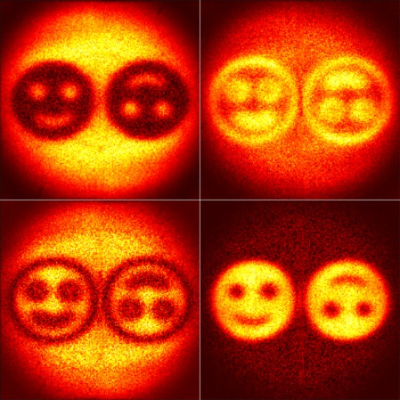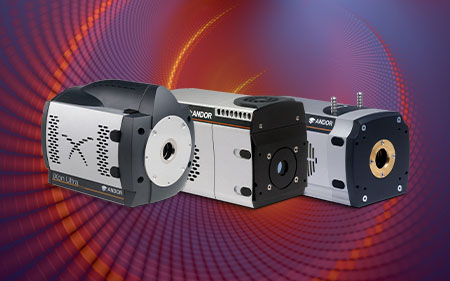Resources
 Part of the Oxford Instruments Group
Part of the Oxford Instruments Group
Expand
Collapse
 Part of the Oxford Instruments Group
Part of the Oxford Instruments Group
As we reach single photon resolution in imaging, and go beyond it, we approach a world better described by quantum mechanics than classical mechanics.
The world of quantum imaging opens the door to the collection of ‘ghost images’, images that are obtained when two entangled light beams are collected at the same time by different cameras. An obstacle along the path of one of the two light beams will create an absorption pattern on both cameras, even though the second light beam was never in contact with the obstacle.
With the quantum concepts of entanglement, superposition and even quantum teleportation, new applications become available. The applications that have benefitted from this so far include improved sensitivity, resolution and increasing information content of existing imaging technologies.
One of the key techniques in quantum imaging is called quantum super resolution imaging. This method takes advantage of the ability of certain quantum systems, such as single photons and quantum dots (nanometer-sized semiconductor crystals), to exist in multiple states simultaneously, or in a state of superposition. By carefully measuring the entangled pair images, it is possible to create images with much higher resolution than previously possible.
Another important technique is quantum entanglement imaging. In quantum entanglement, two or more quantum systems become correlated so that the state of one system can instantaneously affect the state of the other, regardless of the distance between them. By using pairs of entangled photons, it is possible to create images with much higher sensitivity and information content than before. This technique is expected to lead to improved medical imaging and accelerate the advance of quantum information science.

Quantum entanglement-enabled holograms of a smiley-shaped object. Image captured by Dr Hugo Defienne and collaborators at the University of Glasgow, using Andor’s iXon Ultra 897 EMCCD camera. Due to the entanglement of photons, the interference phenomenon occurs remotely, and a hologram can be obtained by detecting the two photons and measuring correlations between them.
Quantum imaging has a wide range of potential applications, from medical imaging and microscopy to remote sensing and surveillance. In medical imaging, for example, quantum imaging techniques could be used to create high-resolution, non-invasive images of internal organs and structures, with the potential to revolutionize the diagnosis and treatment of diseases such as cancer. In microscopy, quantum imaging techniques could be used to image small or transparent samples with unprecedented detail, opening new possibilities for studying living cells and organisms.
In remote sensing and surveillance, quantum imaging could be used to create high-resolution images of distant objects, such as planets or satellites, with the ability to penetrate through clouds and dust. This could have important applications in fields such as weather forecasting, climate science, and national security.
Despite the many potential benefits of quantum imaging, there are also some significant challenges that must be overcome before the full potential of this technology can be realized. One of the biggest challenges is the need for highly specialized equipment and expertise to create and manipulate quantum systems, which can be costly and time-consuming. Another challenge is the need for sophisticated algorithms and data processing techniques to extract useful information from the quantum images.
Overall, quantum imaging is a rapidly developing field with the potential to revolutionize a wide range of applications in science and technology. While there are still many technical challenges that need to be overcome, the ongoing research and development in this field suggests that we are on the cusp of a new era of imaging, one in which quantum principles will play a major role in shaping the way we see and understand the world around us.
Andor'sCMOS, EMCCD and CCD Cameras for Quantum Imaging
Andor offers a range of high performance sCMOS, EMCCD and CCD cameras for quantum imaging experiments. Our product portfolio features an array of high-performance detector solutions that are extensively used in entangled photon studies, leading to important new capabilities in quantum optics and quantum information science. Learn more about Andor's Cameras for Quantum Optics and Quantum Imaging.
Date: January 2023
Author: Andor Technology
Category: Technical Article
 Learn More
Learn More
